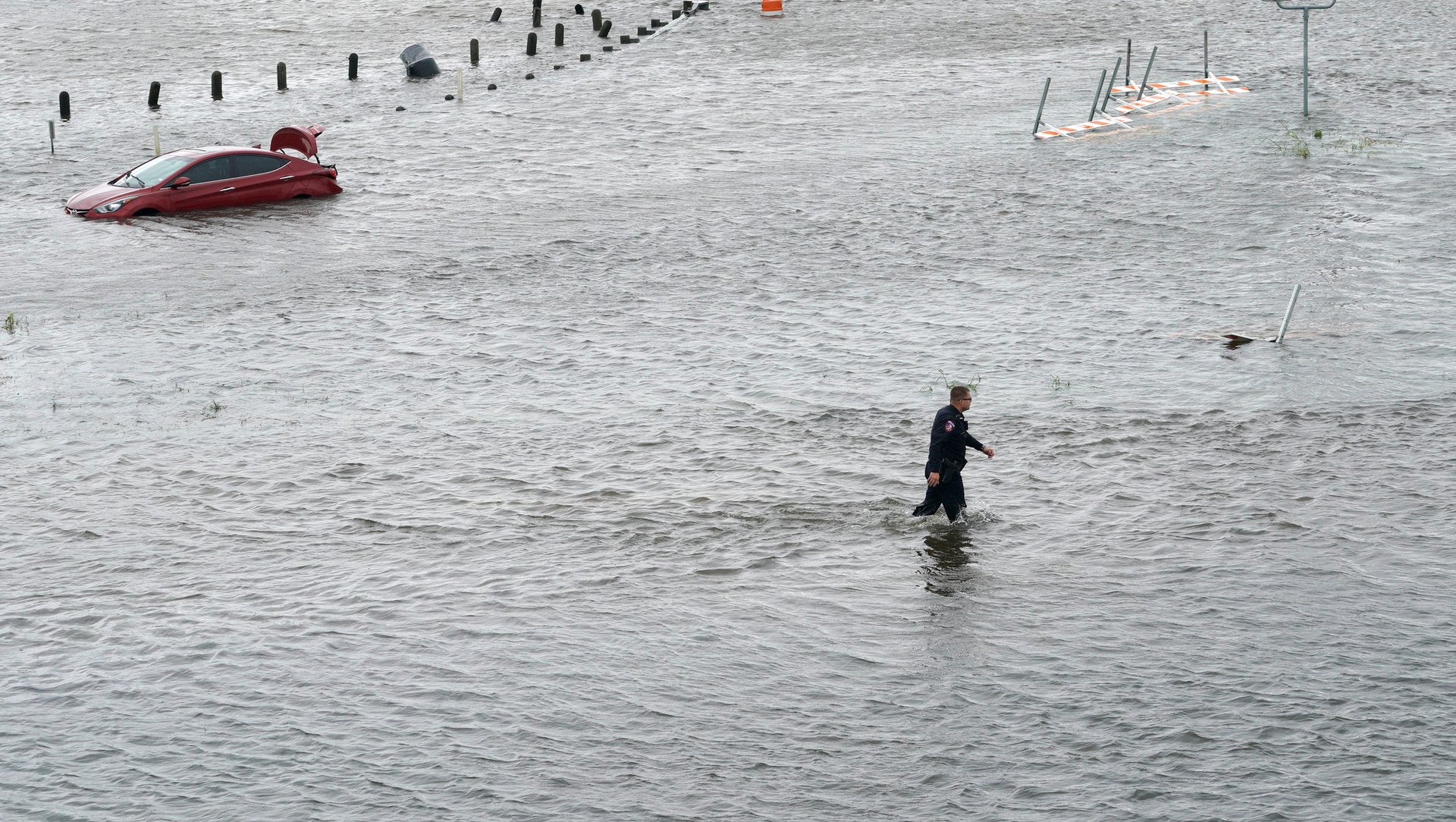What happens to prison inmates when natural disaster strikes?
When natural disasters strike, there’s one population that is particularly tricky to evacuate—and while they can’t make the choice to leave on their own, they may be low on the list of priorities in rescue efforts.


When natural disasters strike, there’s one population that is particularly tricky to evacuate—and while they can’t make the choice to leave on their own, they may be low on the list of priorities in rescue efforts.
During Hurricane Harvey and the resulting flooding, five Texas prisons have been evacuated, totaling nearly 6,000 inmates. Three facilities in Brazoria County relocated 4,500 prisoners over the weekend to lockups in the eastern part of the state, and on Monday, as rain continued to fall, inmates at two facilities in Richmond, a Houston suburb, had to be moved, The Texas Tribune reported.
At least one privately operated immigration-detention center also has been evacuated, according to the federal Bureau of Immigration and Customs Enforcement (ICE). Private-prison giant CoreCivic told Quartz that none of their facilities had been evacuated, including the Houston Processing Center for immigration detention, which has sheltered detainees in place. GEO Group, which operates several facilities in the storm’s path, as Rewire pointed out, has not responded to requests for comment. (More than 50 immigrant women and children who were released from detention were left stranded at a bus station after being dropped off by ICE. Their bus connections had been canceled.)
The Texas Department of Criminal Justice says that the facilities that have received the evacuated inmates have been supplied with additional food and water, and more staff has been called in to help.
So far, officials have said that the storm transfers, made by buses, went smoothly, and that there have been no issues with overcrowding—an important concern, considering the state’s massive prison population. Inmates are brought to facilities that have spaces like gyms to accommodate them, and sleep on mattresses provided by authorities. Many prisons, officials told the Texas Tribune, are running on generator power. The evacuated inmates cannot receive visitors.
When disaster strikes, things can easily go awry, however. Three prisons that evacuated during Harvey also had to move their inmates after flooding in May. A power outage caused a riot in one of the units. (There were no serious injuries.) In 2009, Galveston County, Texas did not evacuate its jail in preparation for Hurricane Ike, and about 1,000 detainees sufferreed through dismal sanitary conditions, according to a report from the advocacy group Texas Civil Rights Project. The water supply was limited, as was food and access to medication and medical personnel.
During Hurricane Katrina, the situation was even worse. More than 6,500 prisoners—men, women, and children—were abandoned at the Orleans Parish Prison by the authorities. They didn’t have access to food, water or ventilation. Some, including a 13-year-old girl in juvenile detention, were locked in their cells where water, often contaminated by sewage, would rise up to their chests. This went on for several days, according to a report from the American Civil Liberties Union.